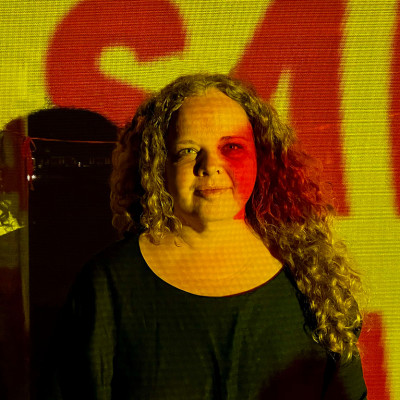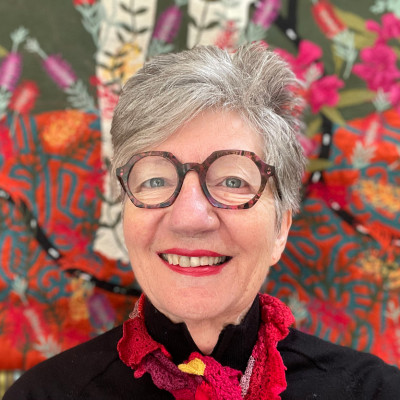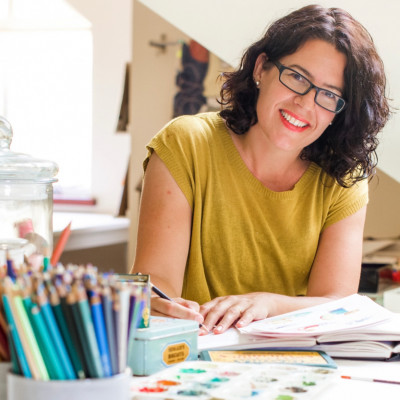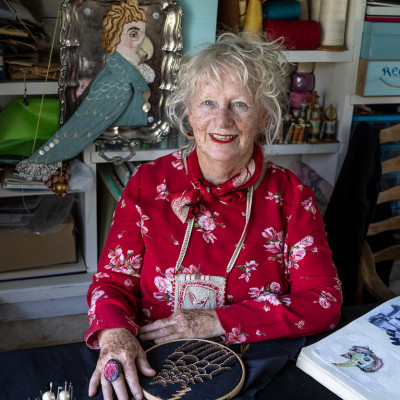
Kait James
Proud Wadawurrung woman and award-winning contemporary artist based in Melbourne.
"It has been my absolute honour to create this piece for Kim. She is one of those rare special people, a humble warrior who gives more than they receive, without wanting or expecting anything in return.
I was really touched by Kim’s story and inspired by her positive outlook on life. Despite enduring so much, Kim is a survivor that radiates love for others, her positivity and kindness are truly inspirational.
When designing and making the vest, I focused on the spontaneous drives Kim used to take with her partner. This made me reflect on the journeys we all take throughout our lives and how just being together is what is most important, rather than the destination.
I also wanted to celebrate Kim, to give something back to her, for Kim to know her story has been heard and she has inspired me to pay it forward in my own life. Nyatne Kim, gobata, which means thank you and take care in Wadawurrung language."




